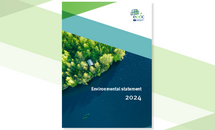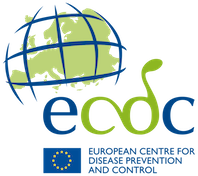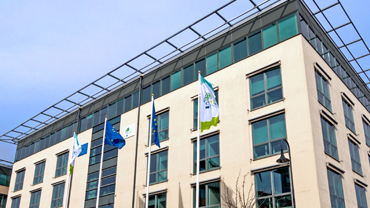Environmental statement 2024
The European Centre for Disease Prevention and Control’s environmental statement for 2024 builds upon the foundation laid in the previous year, highlighting continued progress and new initiatives in the Centre’s journey towards environmental sustainability. The implementation of the Eco-Management and Audit Scheme (EMAS) has led to clear improvements in 2024 in terms of ECDC’s overall environmental impact.
Summary
In addition to existing objectives and targets, ECDC established a new set of specific targets to achieve over 2024, 2025, and 2026. These targets focus on reducing CO2 emissions, minimising single-use items for catering, further lowering paper consumption, and increasing the use of green-label products. The goal is to con- tinue to reduce ECDC’s overall environmental impact and provide clearer direction to management on the steps required to meet these objectives.
Various campaigns in 2024 aimed to raise awareness among ECDC staff, such as the EMAS Fika, Bin of the Week, ECDC Clean-Up Day, and Swap Week, promoting good practice and sustainability awareness. As a member of the EU Agencies Network (EUAN) and the Greening Network of EU Agencies, ECDC participated in more external meetings than in 2023, demonstrating a commitment to becoming a more sustainable agency.
In 2024, ECDC saw an increase in the number of full-time equivalents (FTE) compared with 2023. Despite this growth, electricity consumption per FTE decreased by 1.51%, indicating improved energy efficiency. The cooling data centre also showed a reduction of 1.33% from 2023 and 3.43% per FTE.
Heating consumption decreased significantly, by 34.88% from 2023 and 36.26% per FTE. Cooling consumption saw a reduction of 19.68% per FTE from 2019, but an increase of 11.40% from 2023 and 9.40% per FTE. This fluctuation can be attributed to the automatic system that operates with a cooling heat pump, balancing heating and cooling based on external temperatures. Overall, the combined consumption of heating and cooling has decreased, thanks to system improvements and measures to avoid energy waste, such as setting internal temperatures to 21–25°C in summer and 20–24°C in winter and turning off heating and cooling during weekends and holidays.
In terms of office supply consumption, 100% of office supplies ordered were green label, meeting one of the set goals.
For single-use products in catering, 2024 saw an increase in the total number of paper packages ordered. However, the percentage of paper packages decreased by 8.49% compared with 2023, with a significant rise in the use of porcelain packages, which accounted for 47.97% of cutlery. This shift indicates a successful reduction in single-use products, achieving the target of a 2% reduction.
Paper consumption in terms of sheets printed increased by 0.91% compared with 2023, but when adjusted per FTE, it decreased by 1.25%. The target to reduce printed sheets by 2% was not met, with the increase in meetings held at ECDC con- tributing to higher paper consumption.
Water consumption rose by 18.47% compared with 2019 but decreased by 3.88% per FTE. Compared with 2023, water consumption increased by 15.28% overall and by 12.83% per FTE. Efforts to promote tap water in meetings were evident, with a total of 88 meetings held at ECDC, which contributed to the rise in water consumption.
Waste production showed an increase in recycled waste by 0.85% compared with 2019 but a decrease of 18.18% per FTE. Compared with 2023, both total and per FTE recycled waste increased due to new bins for paper towels and awareness campaigns. However, general non-recycled waste also increased, though these numbers are estimates. The disposal of furniture and IT items saw a significant reduction, with a 67.61% decrease in items disposed of or destroyed.
CO2 emissions from corporate travel increased overall, but when considering the number of meetings and missions, CO2 emissions per instance of corporate travel decreased by 3.31% compared with 2023, achieving the target to reduce emissions by 2%.
In procurement, green technical criteria were implemented in templates for open calls and middle-low value negotiated procedures, along with green award criteria for evaluating procured goods/services. This led to an increase in the percentage of green procurement procedures in 2024 compared with 2023.
Biodiversity at ECDC remains a challenge due to its urban location and rented building with limited open spaces. However, there are green areas within the building, featuring a wide range of indoor plants, and a rooftop terrace garden.
Download








